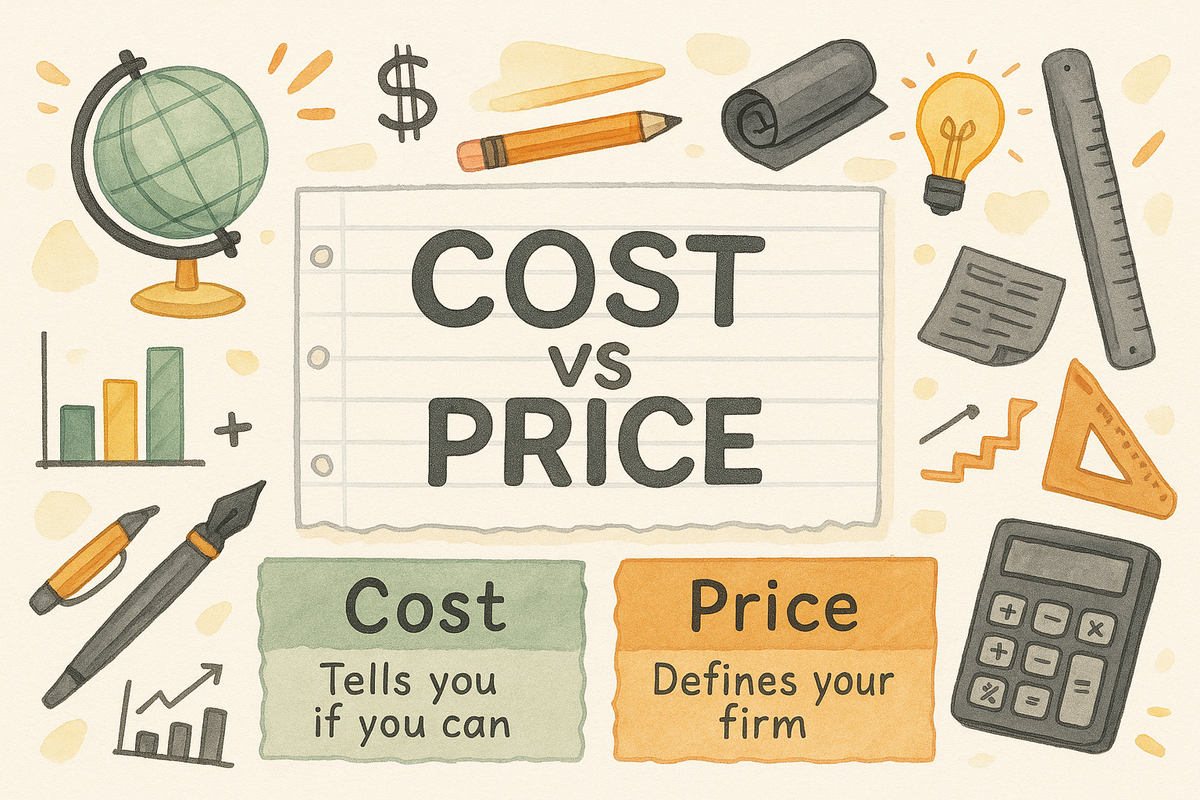Costing vs Pricing: Knowing Your Floor and Setting Your Ceiling
Cost is maths, price is reputation strategy. Get them confused, and you risk cash flow, clients, and credibility

Ok, here’s a heavy topic for some consultants. I know some of you like spreadsheets about as much as baristas like instant coffee, or as much as anyone likes going to the dentist. Even if you don’t absorb all the pricing mumbo jumbo, it’s still useful to understand some of the core concepts between costing and pricing I outline here.
There is, in fact, a lot to be said about this topic. TBH, this article ballooned to 5,000+ words very quickly. So I decided to split it into two: the first tackling costing vs pricing considerations, and the second looking at pricing models. Pricng models is for another day. Hopefully, that makes it less like drinking instant coffee at a café in Paris :)
Costing is the internal process of calculating what it will actually take you to deliver an engagement. It captures all the resources, time, overheads, risks, and compliance requirements involved. In short, costing defines your floor, the minimum you need to cover to avoid eroding margin or exposing your firm to financial risk. Costing considerations should include your firms operating model.
Pricing, on the other hand, is an outward-facing decision about what fee to propose to the client. It balances the value delivered, the client’s willingness to pay, market conditions, risk allocation, and your strategic objectives. Pricing defines your ceiling, the amount the client perceives as fair (or even attractive) relative to the outcomes they expect.
If your cost is higher than the price you can get for the engagement, it’s an indication that it may not be worth pursuing, though there are some exceptions.
In reality, costing and pricing your proposal is part science, part art.
1. Costing Considerations
Costing a proposal is about understanding what it will take for you and your firm to sustainably deliver the engagement. At its core, this means recognising the fundamentals: direct costs such as salaries and employment on-costs; firm costs like training, compliance, and systems; the decision to carry (or not) consultants on the bench; and finally, the margin expected by owners of the firm as a return. Many firms streamline this by providing a consulting pricing schedule or applying a set markup by consultant level, ensuring these elements: salary, on-costs, overheads, and margin are consistently accounted for.
Even if your firm provides standardised guidance, it’s helpful to understand its chosen operating model and approach to business, including how risk is considered and costed. I also highlight cash flow as a cost driver because it can make or break a business.





